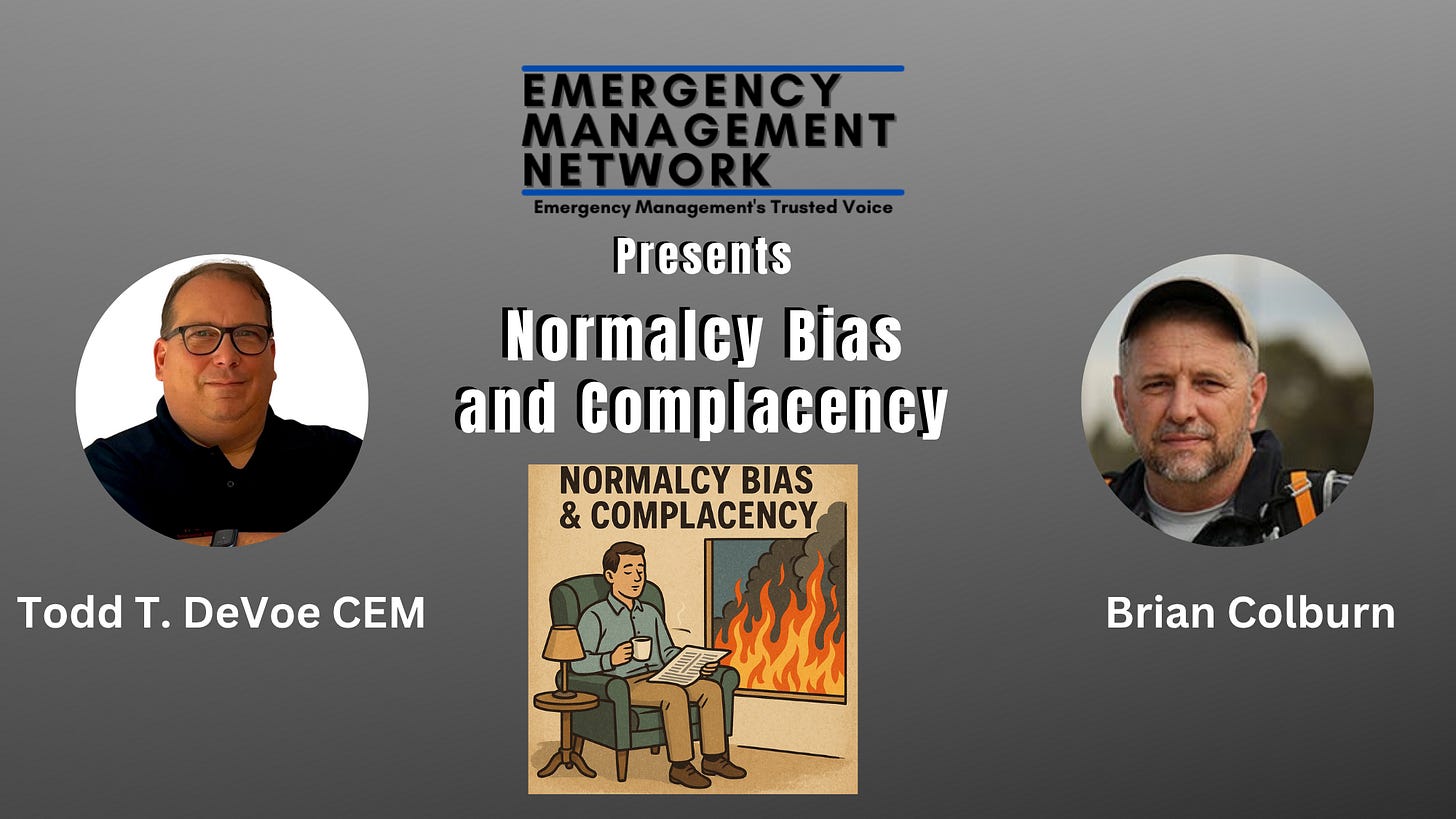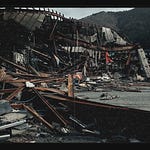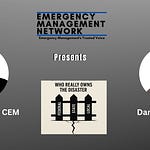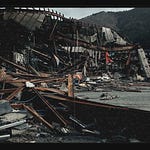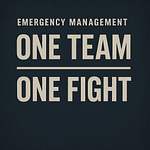Why do we freeze when we should act? Why do organizations wait for the crisis to end before changing? In this episode, Todd DeVoe and Brian Colburn unpack the psychological trap of normalcy bias and its close cousin, complacency — the silent killers that erode readiness long before disaster strikes.
Drawing from behavioral science, real-world emergency management experience, and leadership philosophy, they explore how our brains resist change, why “business as usual” is so seductive, and how leaders can build cultures that recognize danger without panic and adapt without hesitation.
From the OODA and POP-DOC loops to the quiet moments before chaos hits, Todd and Dan challenge emergency managers to confront the most dangerous phrase in the field: “It’s fine — we’ve always done it this way.”
Show Notes:
Hosts: Todd T. DeVoe & Brian Colburn
Produced by: The Emergency Management Network
Episode Length: ~45 minutes
Key Themes Covered:
Understanding Normalcy Bias: Why our minds reject disruptive information and how that plays out in disasters.
Complacency as Organizational Decay: How routine and comfort create blind spots that make us brittle, not resilient.
Lessons from the Field: Real-world examples where complacency cost time, trust, and sometimes lives.
Cognitive Loops for Leaders: How frameworks like OODA and POP-DOC help break the freeze-response and restore situational awareness.
The Moral Imperative of Readiness: Why awareness isn’t paranoia — it’s professionalism.
Cultural Antidotes: Creating workplaces where curiosity and adaptation are rewarded more than compliance and comfort.
Referenced Concepts & Thinkers:
John Boyd’s OODA Loop, Eric McNulty and the NPLI POP-DOC model, Daniel Kahneman’s cognitive biases, and Stoic and Taoist perspectives on awareness and control.



